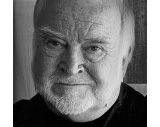Those of us in the lean world are accustomed to discussing "flow"—where work is performed in an even manner to reduce mura or lack of regularity, one of the three forms of waste. Activities are synchronized, layouts are optimized, resources are available exactly where and when they are needed, and the pace is set by true demand. The operation just hums along creating value for the customer. Well, "just" is a bit of a misnomer as we know how difficult achieving flow can be.
I remember being introduced to the work of Mihaly Csíkszentmihályi decades ago in a psychology class, and have recently become reacquainted with him while researching motivation and productivity. Csíkszentmihályi, a psychologist of Hungarian decent and a professor at Claremont, has also developed a theory of flow from an individual perspective—see his TED Talk.
Different than lean flow? Or maybe not?
|
|
…

Add new comment